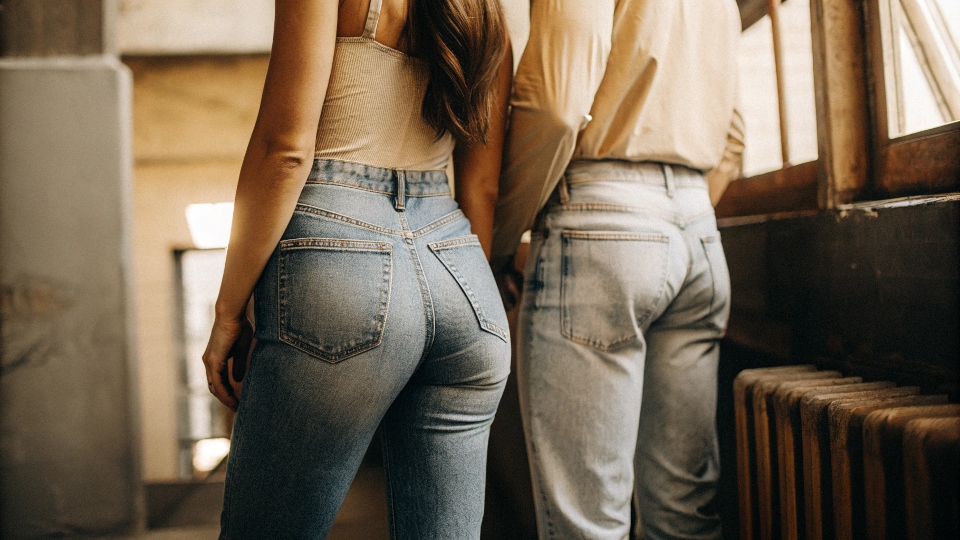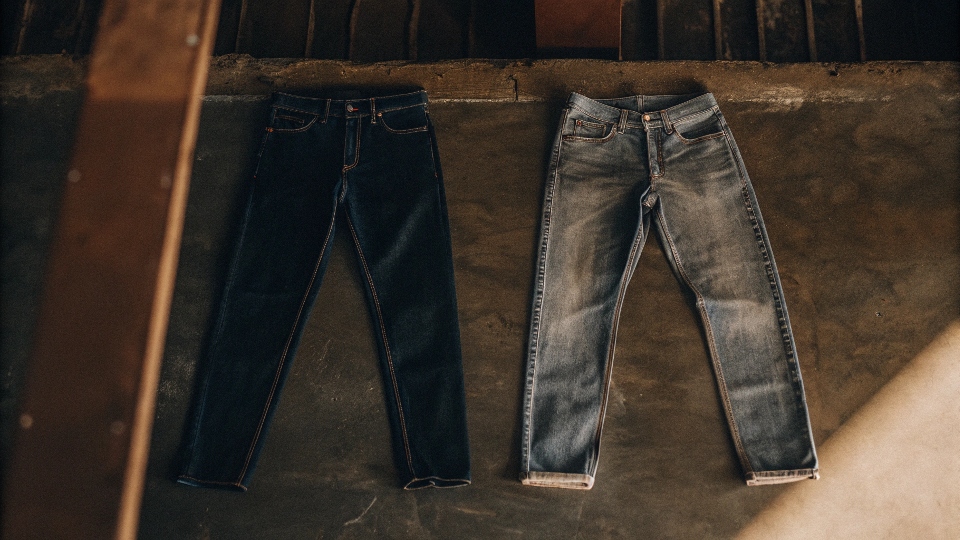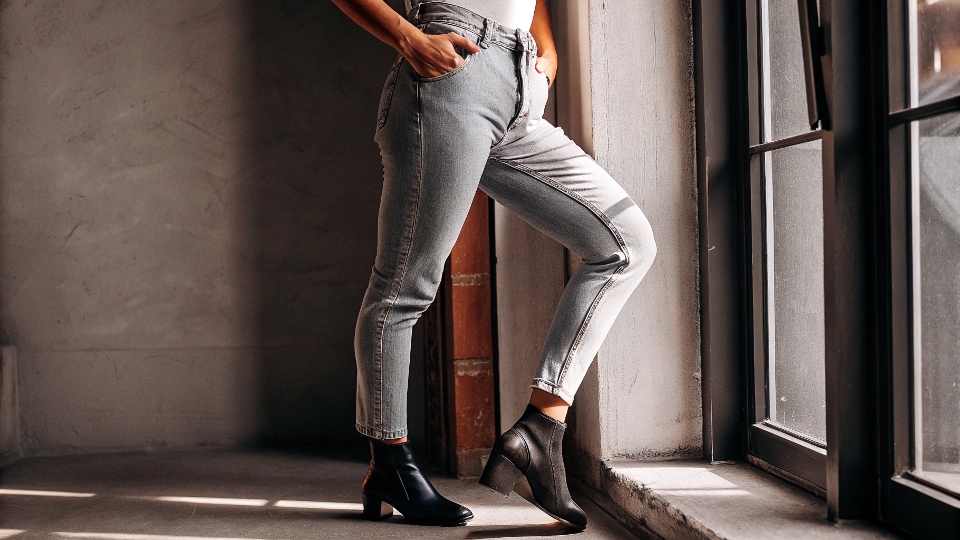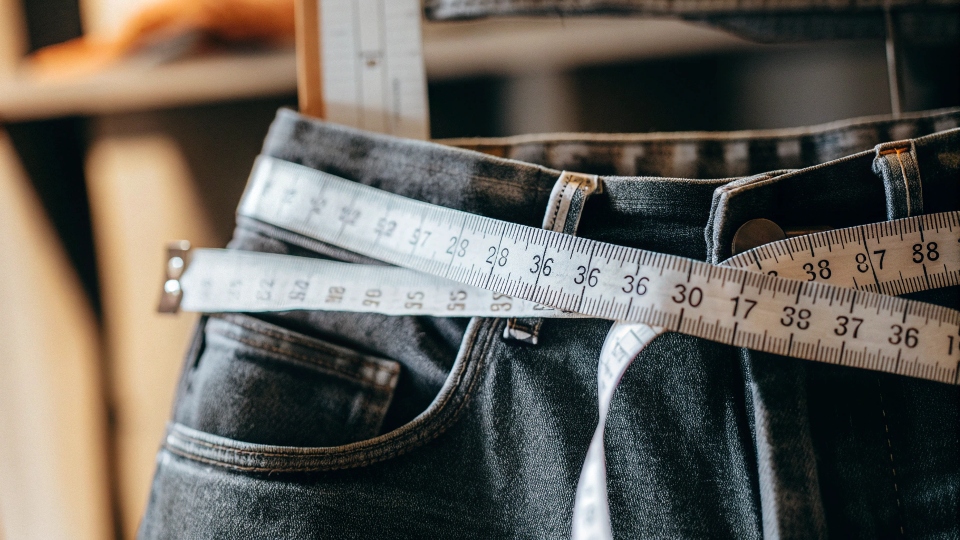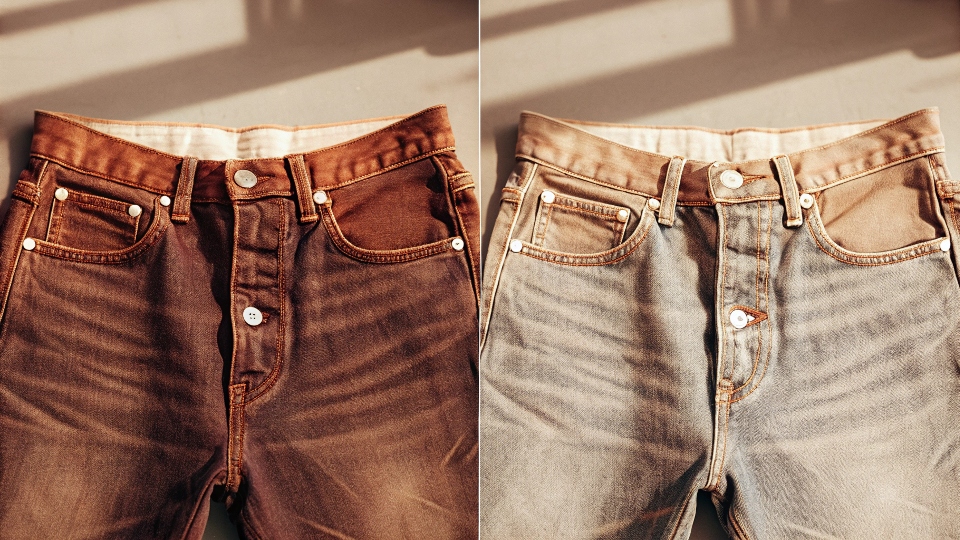You’re in a store and see two pairs of jeans that look almost identical. But one is labeled "men's" and one is "women's." Why can't they just be the same?
Men's and women's jeans are different primarily in their cut, sizing, and fabric. Women's jeans are designed to fit curves1 with more room in the hips and stretchier fabric, while men's jeans have a straighter cut and are sized by waist and inseam measurements.
For over two decades, I've seen millions of jeans get cut and sewn in my factory. The patterns for men's and women's jeans start on completely different tables.
These differences aren't random; they are based on anatomy, history, and function. Understanding them is the key to finding a pair that doesn't just fit, but feels like it was made for you. Let's look at the specific details that separate them.
How Can You Tell the Difference Between Men's and Women's Jeans?
You found a great pair of jeans at a thrift store, but the tag is gone. You need to know if they're cut for a man's or a woman's body before you even bother trying them on.
You can usually tell the difference by looking at three things: the shape of the hips, the size of the pockets2, and the feel of the fabric3. Women's jeans will have a more pronounced curve from the waist to the hip, smaller pockets, and often feel stretchier.
When we create a pattern for jeans, the first question is always "who is this for?" The answer changes everything. The most obvious difference is the cut. A man's jean has a relatively straight line from the waist down through the hips.
A woman's jean has a much more defined curve to accommodate wider hips and create a smaller waist-to-hip ratio. Next, check the pockets. Men's front pockets are almost always deep enough to hold a large phone or a full wallet.
Women's front pockets are often notoriously shallow, sometimes purely for decoration, to create a smoother silhouette. Finally, feel the fabric. While not always true, jeans made for women are far more likely to contain elastane4 or spandex, giving them a noticeable stretch for a body-hugging fit.
Men's jeans, especially classic styles, tend to be made from more rigid, 100% cotton denim.
Can I Wear Women's Jeans as a Man?
You're a guy looking for a really skinny fit5, but the men's section only offers slim or straight. You see exactly what you want in the women's aisle and start to wonder.
Yes, men can absolutely wear women's jeans, and many do to achieve a super-slim or skinny silhouette. The main challenge is finding a pair that fits comfortably in the waist and crotch without being too tight or too loose in the hips and thighs.
The walls between men's and women's fashion are coming down, and jeans are no exception. Many rock stars and fashion-forward men have been wearing women's jeans for years to get a look they can't find in men's collections. The biggest advantage is the variety of fits and washes available.
However, you have to be careful with the pattern. Women's jeans are cut with a shorter rise (the distance from the crotch to the waistband) and more room in the seat and hips. For a man, this can mean the rise is uncomfortably short.
You might need to size up in the waist to get enough room, which could make the hips a bit loose. My advice is to look for styles described as "boyfriend" or "straight leg" in the women's section, as their cut is less curvy and more forgiving. The key is to try them on and prioritize comfort.
What Is a Size 32 Mens in Women's Jeans?
You wear a size 32 in men's jeans and want to buy a pair from the women's section online. You're staring at a size chart6 with numbers like 8, 10, 12, or 29, 30, 31, and have no idea where to start.
There is no exact conversion, but a men's size 32 waist is roughly a women's size 10 or 12, or a women's waist size of 30 or 31. This varies hugely by brand, so you must check the specific brand's size chart and measurements.
This is one of the most confusing parts of shopping for jeans. Men's sizing7 is a simple system based on direct measurements: waist and inseam (e.g., 32x34). Women's sizing is an abstract system that is notoriously inconsistent. A size 10 in one brand can be a 12 in another due to "vanity sizing8." To make things simple, you can use a basic formula as a starting point: take the man's waist size and subtract 1 or 2 to get the approximate women's size number.
| Men's Waist Size | Approx. Women's Waist Size | Approx. Women's Numeric Size |
|---|---|---|
| 30 | 29 | 8 |
| 32 | 31 | 12 |
| 34 | 32 | 14 |
| 36 | 34 | 16 |
Disclaimer: This chart is only an estimate. The only truly reliable method is to ignore the label size. Take a tape measure and measure the waist of a pair of your own well-fitting jeans laid flat. Then, compare that inch or centimeter measurement to the detailed size chart for the women's jeans you want to buy.
Do Men's and Women's Jeans Button Different?
You button up a pair of pants and it feels awkward, like you're doing it backward. You wonder if the button placement is a clear sign that you've grabbed a pair of women's jeans.
Yes, traditionally, men's and women's pants fasten on opposite sides. Men's trousers have the button on the right side (right-over-left), while women's often have the button on the left side (left-over-right). However, this rule is not always followed today.
This is a strange little detail with a long history. The tradition dates back to a time when wealthy men dressed themselves, while wealthy women were often dressed by servants.
Since most people are right-handed, a right-over-left closure on men's pants was easier for them to button themselves. For a right-handed servant facing a woman, a left-over-right closure was easier to fasten for them. It's a fascinating piece of fashion history. But is it still relevant?
In my factory, I can tell you that for modern jeans, this rule is very flexible. Many brands, especially unisex or mass-market ones, now use the men's right-over-left standard for all their jeans simply because it's more efficient for production.
So, while it's a traditional difference, you can't rely on it as a foolproof way to identify a pair of jeans.
Conclusion
The differences between men's and women's jeans are rooted in fit for different body shapes and historical tradition. But today, the most important rule is to find the pair that fits you best.
-
Discover how women's jeans are designed for curves to ensure a better fit. ↩
-
Understanding pocket differences can help you choose jeans that meet your practical needs. ↩
-
Knowing the fabric types can enhance your comfort and style when choosing jeans. ↩
-
Learn how elastane contributes to the fit and comfort of women's jeans. ↩
-
Find out how men can achieve a trendy skinny look by exploring women's jeans. ↩
-
Understanding size charts can simplify your online shopping experience for jeans. ↩
-
Exploring sizing differences can prevent confusion when shopping for jeans. ↩
-
Learn about vanity sizing to better navigate women's clothing sizes. ↩

